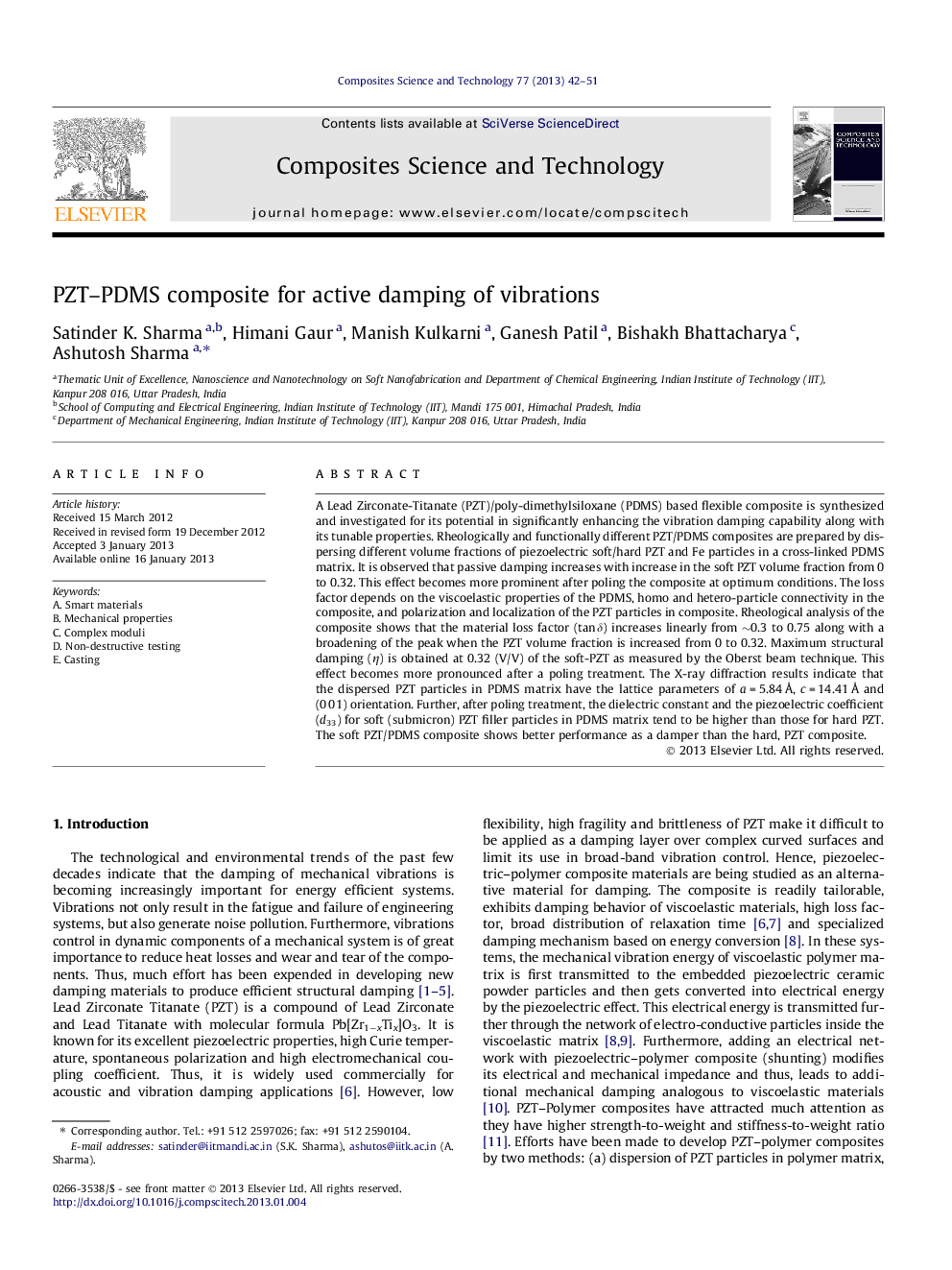| Article ID | Journal | Published Year | Pages | File Type |
|---|---|---|---|---|
| 820569 | Composites Science and Technology | 2013 | 10 Pages |
Abstract
A Lead Zirconate-Titanate (PZT)/poly-dimethylsiloxane (PDMS) based flexible composite is synthesized and investigated for its potential in significantly enhancing the vibration damping capability along with its tunable properties. Rheologically and functionally different PZT/PDMS composites are prepared by dispersing different volume fractions of piezoelectric soft/hard PZT and Fe particles in a cross-linked PDMS matrix. It is observed that passive damping increases with increase in the soft PZT volume fraction from 0 to 0.32. This effect becomes more prominent after poling the composite at optimum conditions. The loss factor depends on the viscoelastic properties of the PDMS, homo and hetero-particle connectivity in the composite, and polarization and localization of the PZT particles in composite. Rheological analysis of the composite shows that the material loss factor (tan δ) increases linearly from â¼0.3 to 0.75 along with a broadening of the peak when the PZT volume fraction is increased from 0 to 0.32. Maximum structural damping (η) is obtained at 0.32 (V/V) of the soft-PZT as measured by the Oberst beam technique. This effect becomes more pronounced after a poling treatment. The X-ray diffraction results indicate that the dispersed PZT particles in PDMS matrix have the lattice parameters of a = 5.84 Ã
, c = 14.41 Ã
and (0Â 0Â 1) orientation. Further, after poling treatment, the dielectric constant and the piezoelectric coefficient (d33) for soft (submicron) PZT filler particles in PDMS matrix tend to be higher than those for hard PZT. The soft PZT/PDMS composite shows better performance as a damper than the hard, PZT composite.
Keywords
Related Topics
Physical Sciences and Engineering
Engineering
Engineering (General)
Authors
Satinder K. Sharma, Himani Gaur, Manish Kulkarni, Ganesh Patil, Bishakh Bhattacharya, Ashutosh Sharma,
